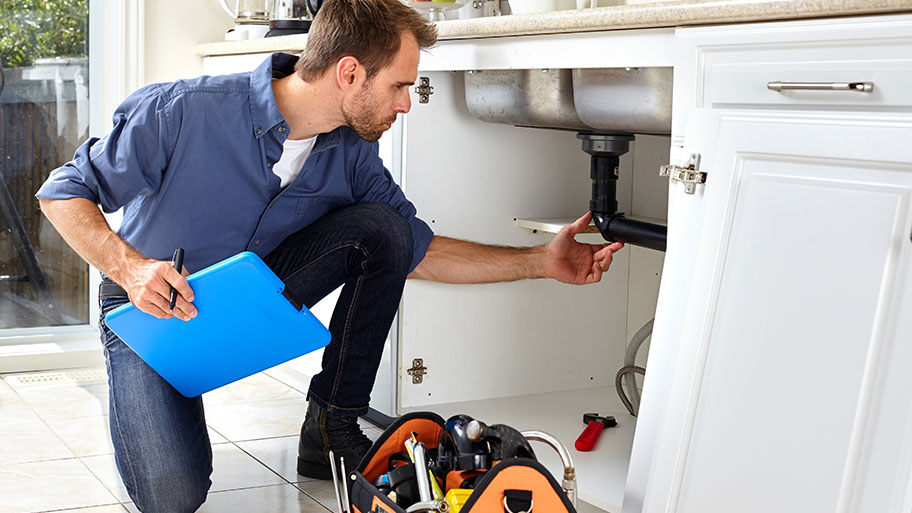Plumbing problems are an inevitable part of homeownership, and they can arise at the most inconvenient times. However, knowing how to identify and address these issues early can save you from costly repairs down the road.
If you live in Hampton Roads, understanding the specific circumstances that warrant a call to a professional plumber is essential, especially considering the unique challenges posed by the region’s coastal climate, such as high humidity and saltwater corrosion.
These factors can exacerbate common plumbing issues, making timely intervention even more critical.
Here are ten common plumbing issues that homeowners may encounter, along with expert advice on when it’s best to bring in a pro to ensure everything runs smoothly and safely in your home.
Recognizing these problems early on can not only save you money but also prevent more significant damage to your property.
1. Dripping Faucets
A dripping faucet may seem harmless, but it can waste hundreds of gallons of water annually and drive up your utility bills. Common causes include worn-out washers, corroded valve seats, or faulty O-rings.
When to DIY: If the leak is minor and only one faucet is dripping, you can often fix it by replacing the washer or O-ring yourself. Basic tools and supplies from your local hardware store can get the job done, making it a simple task for handy homeowners.
When to Call a Pro: If you’ve tried replacing parts and the leak persists, or if multiple faucets are dripping, it may indicate a larger issue within your plumbing system. A professional can quickly diagnose and fix the underlying problem.
2. Running Toilets
A running toilet can waste up to 200 gallons of water a day, making it both environmentally and financially costly. The issue is often caused by a faulty flapper valve, a worn-out fill valve, or improperly adjusted float mechanisms.
When to DIY: If you notice your toilet running, first check the flapper valve for wear and ensure it’s sealing properly. Adjust the float mechanism if necessary, and look for any visible leaks or blockages. These simple fixes can often resolve the issue without needing professional help.
When to Call a Pro: If replacing the flapper or adjusting the mechanism doesn’t stop the problem, you should consult a plumber to prevent water waste and ensure there’s no hidden issue.
3. Low Water Pressure
Low water pressure makes daily tasks frustrating and could point to more significant plumbing concerns. The problem may stem from clogged aerators, pipe corrosion, or hidden leaks within your system.
When to DIY: Start by checking and cleaning the aerators on your faucets. If that doesn’t resolve the issue, inspect your fixtures for any obvious leaks or blockages.
When to Call a Pro: If your home experiences a sudden drop in water pressure or if the issue affects multiple fixtures, a plumber can help identify whether you’re dealing with a leak or a more serious problem like pipe corrosion.
4. Slow or Clogged Drains
Slow-draining sinks or bathtubs are often signs of a blockage caused by hair, soap residue, or food particles. While plungers and drain snakes can work for minor clogs, persistent issues may signal a deeper problem in your pipes.
When to DIY: Try using a plunger or a drain snake to clear minor clogs. You can also use a mixture of baking soda and vinegar to help break down buildup.
When to Call a Pro: If your DIY efforts aren’t effective, or if multiple drains are clogged simultaneously, it’s time to call a plumber. Persistent clogs can indicate a more serious issue, such as a blockage in your main sewer line.
5. Water Heater Issues
Water heater problems can disrupt your daily routine, leaving you with inconsistent hot water or none at all. Common signs of trouble include fluctuating water temperatures, strange noises, or water pooling around the base of the unit.
When to DIY: Check the temperature setting on your water heater and ensure it’s set appropriately. Additionally, inspect the drainage valve for leaks or sediment buildup.
When to Call a Pro: If your water heater is leaking, over ten years old, or making loud banging noises, a professional plumber can determine whether repairs or a full replacement are needed.
6. Leaky Pipes
Leaky pipes can lead to water damage, mold growth, and even structural issues if left unaddressed. They’re often caused by high water pressure, corrosion, or worn-out joints.
When to DIY: For small leaks, you can use plumbing tape or epoxy putty as a temporary fix. Tightening loose fittings might also help reduce minor leaks.
When to Call a Pro: If you notice water stains, dripping sounds, or wet spots under sinks, call a plumber immediately. Quick intervention can prevent more extensive (and expensive) damage.
7. Sump Pump Failure
In areas prone to flooding, like Hampton Roads, a functioning sump pump is crucial for protecting your basement. Common issues include power failures, clogged discharge lines, or mechanical breakdowns.
When to DIY: Regularly check the sump pump’s power source and clean any debris from the discharge line. You can also test the pump by pouring water into the sump pit to see if it activates.
When to Call a Pro: If your sump pump stops working or fails to keep up during heavy rain, a plumber can inspect the system and make necessary repairs or replacements.
8. Sewer System Backup
A sewer system backup is a serious issue that poses health hazards and can cause extensive damage to your home. Signs include foul odors, multiple drain clogs, or water backing up into sinks or bathtubs.
When to DIY: If the backup is localized, try using a plunger on affected fixtures. Avoid flushing anything down the toilet during this time.
When to Call a Pro: Contact a plumber immediately if you suspect a sewer backup. They have the equipment to identify and resolve issues, such as tree root intrusion or collapsed sewer lines.
9. Burst Pipes
Burst pipes are among the most severe plumbing emergencies, often caused by freezing temperatures or significant pressure buildup. They can lead to flooding and extensive damage if not addressed swiftly.
When to DIY: If you can safely access the burst pipe, you can use plumbing tape or a pipe clamp as a temporary fix until a professional arrives.
When to Call a Pro: Shut off your main water supply and call a plumber immediately if a pipe bursts. They’ll assess the damage, repair the broken pipe, and advise on measures to prevent future occurrences.
10. Garbage Disposal Problems
A jammed or malfunctioning garbage disposal can bring your kitchen to a standstill. Common problems include clogs, dull blades, or issues with the disposal’s motor.
When to DIY: For jams, turn off the disposal and use an Allen wrench to manually turn the blades. You can also check for any visible obstructions in the disposal.
When to Call a Pro: If your garbage disposal makes grinding noises, won’t turn on, or if resetting it doesn’t help, a plumber can safely diagnose and fix the problem.
Conclusion
Plumbing problems can escalate quickly and lead to significant damage if not addressed promptly.
This is especially true in an area like Hampton Roads, where the coastal climate presents unique challenges such as humidity, saltwater exposure, and seasonal storms that can exacerbate plumbing issues.
Common problems, including leaky faucets, clogged drains, and broken pipes, can quickly worsen if left unattended. Recognizing these signs early and knowing when to call a professional plumber is crucial, as it can save you time, money, and unnecessary stress down the line.
If you’re currently facing any plumbing issues or want to prevent potential problems, consider using Hampton Roads Home Services.
They can help you connect with trusted local plumbers who understand the specific challenges of the area and can ensure your home remains safe, efficient, and comfortable throughout the year. Don’t let plumbing problems disrupt your life; take action today!


